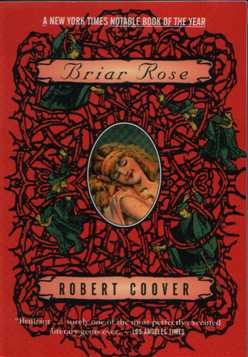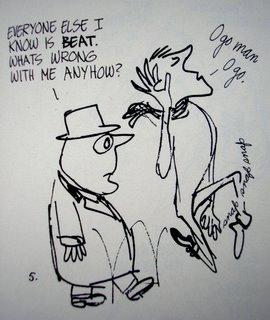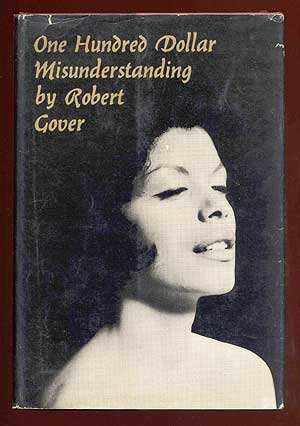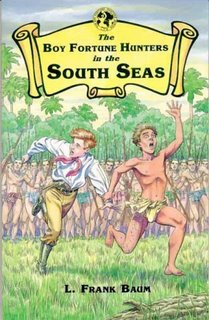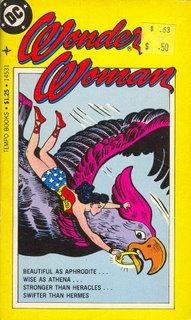 Wonder Woman. Charles MoultonWonder Woman
Wonder Woman. Charles MoultonWonder Woman is a 1978 paperback book republishing of 6 stories from the DC's
Wonder Woman comics of the 1950s. While it offers a delightful glimpse into the original Golden Age comics, the paperback lacks the color graphics and full size of the originals. Five of the six stories represented in this volume were copyrighted between 1953 and 1955.
The first story, "Wonder Woman's Lasso," is dated 1942 and was written by Charles Moulton (a pseudonym for
Dr. William Moulton Marston) with art by Harry G. Peter. It tells the story of how Wonder Woman won her unbreakable magic lasso with mind-controlling powers. Written prior to the 1954 Comic Book Code, it contains lots of depictions of scantily clad women in various forms of bondage. In addition to winning her lasso, Wonder Woman saves the chief of American intelligence from a Nazi plot which includes an invisible ray and a cruel baroness.

"The Bird Who Revealed Wonder Woman's Identity," the second story, is about a talkative pet mynah bird that causes some awkward moments for Diana Prince when it reveals her secret identity.
In the third story, "Wonder Woman's Wedding Day" is ruined when Prof. Uxo's time dimension transfer machine turns her into an invisible wraith. Using only the power of suggestion, she convinces the evil scientist to return her to normal.
In "The Secret Invasion," Orlusians from the planet Orbus use mind control to confuse Wonder Woman while they plan their attack of Earth. Fortunately, she is able to use brute force to combat their nefarious scheme.
The last stories in the book are origin stories for two of her fascinating weapons. In "The Talking Tiara" Wonder Woman fights a Tyranosaurus, a Roc and a giant Octopus to win the right to wear the Linguagraph Tiara which allows her to understand and speak any language past, present or future.
"The Origin of the Amazon Plane" is the final entry in this collection. When she finds the plane it is in three parts protected by a giant underwater carniverous plant, an electrified tree, and a fiery volcano. She must defeat these three obstacles to put the plane together and use it to combat evil.
Interestingly, she uses her Amazon Plane in the first story to go to Paradise Island to get her famous lasso, then in this last story she uses her lasso to overcome the volcano and retrieve the last part of her plane. So it becomes an amazing chicken and egg paradox as to which came first, unless there were two Amazon Planes. The first 1942 plane is shown with a propeller, while the plane in the last story, written in 1955, has no propeller.
These stories provide a wonderful glimpse into the origins of a 20th century icon. They also provide a contrast between pre- and post-Comic Code depictions of the same super hero. If you can live without the color graphics, this is a good introduction to Wonder Woman.
 Strangers in Paradise: Pocket Book 4. Terry Moore
Strangers in Paradise: Pocket Book 4. Terry Moore
